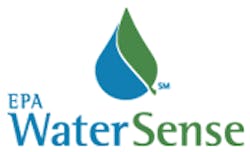Bathroom Sink Faucets To Bear WaterSense Label
Consumers will soon be able to identify high-performance, water-efficient sink faucets for their bathrooms now that EPA has released a product specification for ones that use about 30 percent less water than conventional models.
In order to earn the WaterSense label, faucets must be independently tested and certified by a licensed certifying body to meet EPA's water-efficiency and performance criteria. To meet the criteria, faucets and accessories such as aerators cannot flow at a rate of more than 1.5 gallons per minute (gpm), or less than 0.8 gpm. Working with stakeholders, EPA chose a rate that ensures both water savings and that the faucet flow rate will continue to meet the needs of the user. WaterSense labeled faucets not only save water, but the have the added benefit of saving energy used to treat, pump, and heat water. In fact, letting your faucet run for 5 minutes uses about as much energy as letting a 60-watt light bulb run for 14 hours. Consumers can already find the WaterSense label on more than 60 high-efficiency toilets. WaterSense labeled toilets use 20 percent less water than standard models and are independently tested and certified to perform as well as or better than their market counterparts. Working with EPA, retailers are starting to feature WaterSense labeled toilets in their plumbing sections, and bathroom sink faucets should be close behind in 2008. Bathrooms are, by far, the largest use of water in the home—responsible for about half of total indoor water use. By installing a WaterSense labeled high-efficiency toilet and faucet or aerator, American homes can save more than 11,000 gallons each year. WaterSense, an EPA partnership program launched in 2006, seeks to enhance the market for water-efficient products and services by building a national brand for water efficiency. For more information and a list of WaterSense labeled plumbing products: http://www.epa.gov/watersense/specs/faucet_final.htmSource: U.S. Environmental Protection Agency (EPA)
